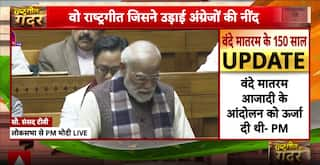Higher Education Won't Guarantee Jobs For Young Indians: ILO
The ILO report sheds light on a reality where the unemployment rate for graduates stands at 29.1 per cent, nearly nine times higher than the 3.4 per cent observed among illiterate individuals

In India, the prospects of securing employment are seemingly dimmer for highly educated youth compared to those with minimal education, a recent report by the International Labour Organization (ILO) has revealed, according to news agency Bloomberg. The report sheds light on a concerning reality where the unemployment rate for graduates stands at a staggering 29.1 per cent, nearly nine times higher than the 3.4 per cent observed among illiterate individuals.
Moreover, young people with secondary education or higher face unemployment rates six times higher than their less-educated counterparts, with a rate of 18.4 per cent. The ILO report highlights the grim situation of youth unemployment, especially among those with secondary education or higher qualifications, signaling a growing crisis over time. This trend points to a significant mismatch between the skills possessed by the workforce and the demands of the job market in India
The ILO report also compares India's situation with that of China, where the youth unemployment rate reached 15.3 per cent in the first two months of the year, three times higher than the urban population's rate.
Proportion of unemployed youths
Despite a slight decrease in the proportion of unemployed youths from 88.6 per cent in 2000 to 82.9 per cent in 2022, the figures underscore a notable increase in educated unemployed individuals, rising from 54.2 per cent to 65.7 per cent during the same period. Women bear a disproportionate burden, constituting 76.7 per cent of educated unemployed youths.
Urban vs rural
Urban areas saw higher rates of joblessness compared to rural regions. India's female labour force participation rate, one of the lowest globally at around 25 per cent, witnessed a slight improvement during the pandemic due to increased subsistence employment.
Gig jobs
The report further point out against the surge in gig economy jobs, characterised by temporary and low-paying employment, such as food delivery services. The blurred lines between employees and self-employed individuals on digital platforms pose fresh challenges to worker well-being and working conditions, according to the ILO.






































